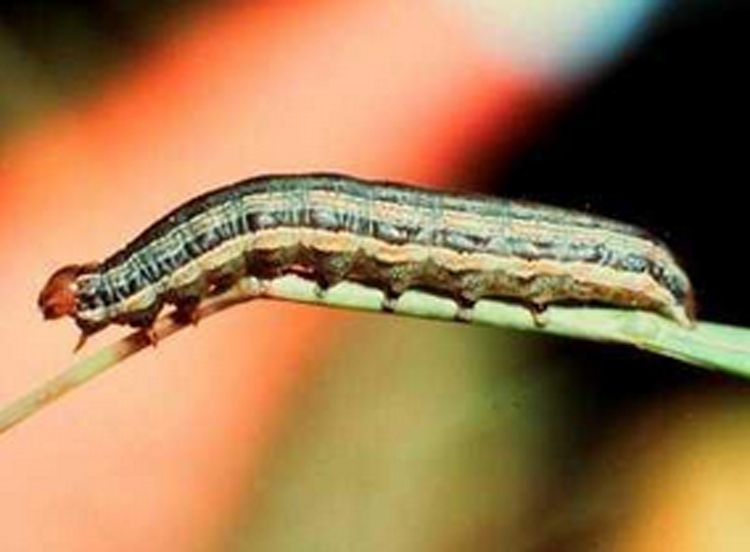The year of the Chilo worm

Ronald Kudzai Rusere Correspondent
Each season, farmers are confronted with huge risks of crop damage and many uncertainties and these farmers need effective and sustainable solutions every season to ensure profitability, particularly when a significant amount of resources is committed to crop cultivation and production in expectation of profitable yields. Currently, we are facing an outbreak of the Chilo worm in Zimbabwe.
The distribution of the Chilo worm in the country was confined to the low-veld (< 600m) and middleveld (600-1200m) with the Busseola fusca dominating the high-veld (>1200m).
However, there have been reports of Chilo worm damaging up to 300 hectares of maize countrywide. Insect pests are a major constraint to crop productivity and profitability due to their direct and indirect damage to valuable crops.
We face a major challenge if we are to meet demand for grain in the country. Climate change and increases in temperature we are facing in Zimbabwe have serious consequences on the diversity and abundance of insect pests and also on the extent of crop damage due to insect pests, affecting both crop production and food security.
Currently, huge losses (pre-and post-harvest) are being incurred due insect pest consumption, which can be sufficient to feed more people in the country. Climatic variables such as temperature, rainfall, humidity and atmospheric gases can interact with pests as they have an influence on changes in geographic distribution and population dynamics of the pest species.
Changes in temperature can lead to a number of effects on the life history parameters, which may eventually change insect pest population. The result of such changes can lead to variations in insect pest population growth rates, increase in the number of insect pest generations, extension of insect pest development season, changes in geographical distribution as well as crop–pest synchrony.
Currently, we have faced increases in temperatures in the country and this will likely cause insect pests to become more abundant. In Zimbabwe, we have been experiencing warmer winters and this warming could decrease the occurrence of severe cold events, which in turn might expand the overwintering area for insect pests.
Warmer winters (mild winters) reduce winter-kill of pests through the winter, thereby allowing a greater number of pests to survive through a normally expected harsh winter season and consequently, increase insect populations in subsequent growing seasons.
This warming effect can potentially result in increased levels of insect pest feeding and growth and also the possibility of additional generations in a given year.
Increased temperature can also have a great influence on the phenology of insects, including early arrival of insect pests in agricultural fields as well as time of emergence of different insect pests.
This will require early and more frequent application of insecticides to reduce the pest damage.
The country is facing temperature increases as a result of climatic changes and these can have an influence on: shifts in geographical range of insect pests as we are now witnessing an outbreak of the Chilo worm countrywide, which was usually confined in the low lying areas of Zimbabwe, increased overwintering and rapid population growth, changes in insect-host plant-natural enemy interactions, synchrony changes between insect pests and their crop hosts, introduction of alternative hosts as green bridges, emergence of new pest problems and increased risk of invasion by migrant pests such as the Tuta absoluta, which farmers were recently warned of by the Tobacco Research Board and reduced efficacy of different components of insect-pest management.
These changes will have major implications not only for crop protection, but also food security in the country, especially at a time where the need to increase and sustain food production is most urgent. For all of the insect species, high temperatures, which are below the species’ upper threshold limit will cause a faster development rate, leading to a rapid increase in pest populations as the time to reach reproductive maturity is reduced.
Temperature limits geographical range, overwintering, population growth rates, length of crop growing season, crop-pest synchronisation, interspecific interactions, dispersal and migration and availability of host plants.
Overwintering of insect pests will increase as a result of climate change, producing larger insect pest populations as a base for build-up in numbers in the following season. As a result of climate change, many insect species that are migratory can also be well adapted to exploit new opportunities by moving into new areas.
Pest outbreaks might occur more frequently, particularly during extended periods of drought, followed by heavy rainfall. Possibilities of evolutionary adaptation in insects can likely occur as a result of changes in the environment.
We need to take a concerted look at the likely effects of climate change on crop protection and devise appropriate measures to mitigate the effects of climate change on food security.
As a result of reduced crop rotation, increased monoculture and favourable weather conditions such as warm weather that boosts the pest population, or mild winter temperatures that increase the chance of pest survival through the winter, are known to increase the use of agricultural chemical pesticides.
Since the cost of pesticide application constitutes a sizeable amount of a farmer’s total overall cost during a given crop production season, minimising the use of agrochemicals will likely make more cash resources available to a farmer by reducing the overall costs needed to increase the acreage that is protected against pests or diseases.
It will also free-up resources to provide additional plant nutrition needed to increase crop productivity, while reducing environmental contamination from chemical residues.
Farmers should scout for pests frequently and also regularly as this can save their crops, make use of the chemicals that Seed Co found to be effective in controlling Chilo worm, adopting crop rotation and also crop diversification on farms.
Ronald Kudzai Rusere is an agronomist and can be contacted at [email protected]









Comments